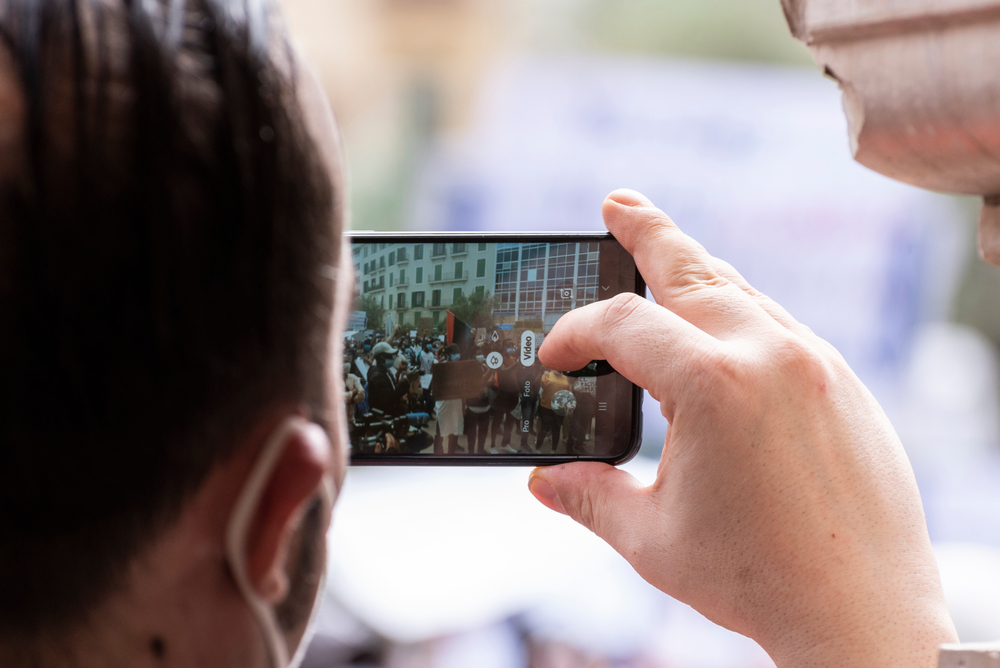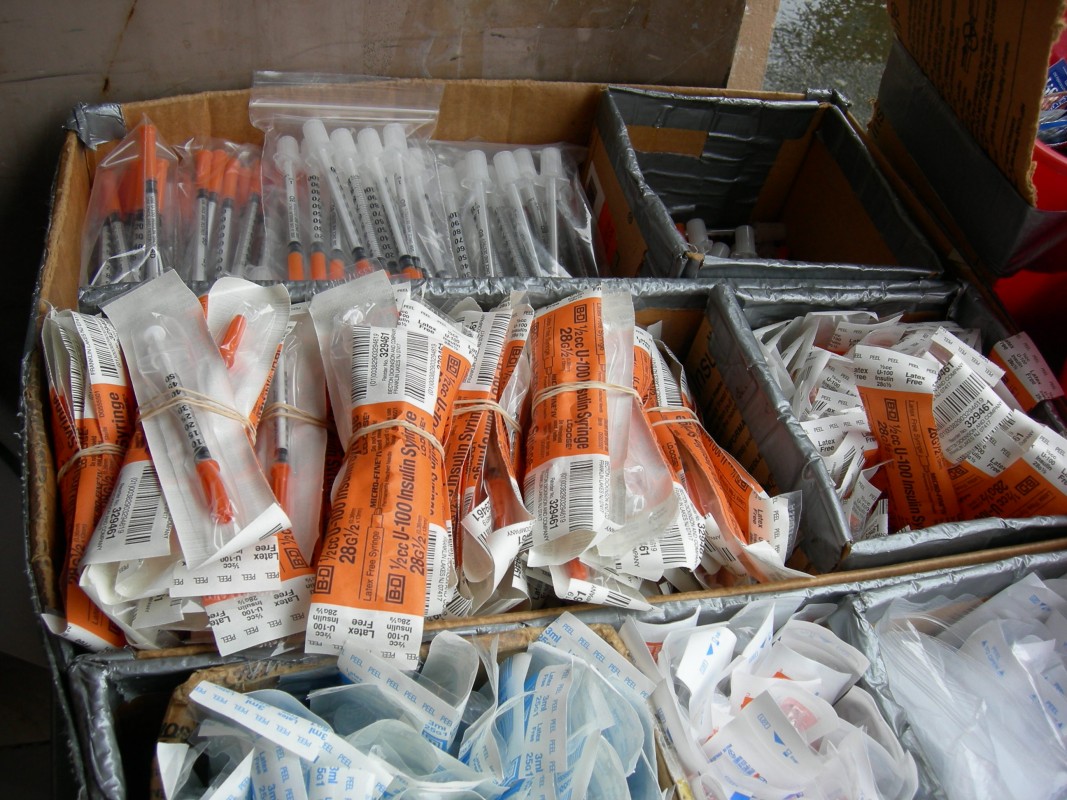Since 2021, Kensington, North Philadelphia, has been seriously impacted by the use of xylazine, a sedative also called ‘tranq’. Xylazine, originally a sedative used in veterinary settings, is a non-opioid tranquiliser which has been used in combination with fentanyl, commonly called “tranq dope”. The sedative effects of xylazine combined with fentanyl can be particularly life-threatening as it slows down people’s breathing and heart rate, as well as their blood pressure. Xylazine also creates serious wounds in injection sites that can spread if left untreated. It is also everywhere: xylazine was detected in more than 90% of all tested opioid samples in Philadelphia in 2021.
Simultaneously, a trend of dark and voyeuristic tourism began to develop, known as “tranq tourism”.
This “trend” had content creators around the neighbourhood filming people using drugs on the streets. Many of these people are documented in vulnerable moments, often laying on the floor or unable to walk, with some even overdosing. While most content only capture people on the streets, in some videos those documenting ask people about their lives or their current situation in a dehumanising way, engaging superficially to generate more engagement. This trend has sadly adopted stigmatising and dehumanising terms to refer to the individuals depicted, such as “zombies”, while publicly humiliating them, as they are often filmed when they are in physical states in which they are unlikely to be able to consent.
Touring round neighbourhoods with issues is not a new phenomenon. In 2013, the “Real Bronx Tours” were heavily criticised by local residents as it advertised the area as “a real New York City ‘ghetto’…[the borough] was notorious for drugs, gangs, crimes and murders”. This did not reflect the area, and only “mocked the less fortunate members of the community”, according to residents.
Witnessing human suffering for views
There are many parallels between tranq tourism and the historic “slum tourism” that has happened for hundreds of years – the word “slum” was originally used by upper-class Londoners during Victorian times to describe the East End of London. Consequently, using the term ‘slumming’ to refer to the practice of the time of visiting the East End area guided by the police as a form of entertainment. Denoting how ‘privileged’ individuals have always felt the voyeuristic need to gaze upon poverty and the less privileged of our society.
The phenomenon, along with similar ‘tourist destinations’, aligns with broader societal issues of class-based exploitation, encapsulated by the concept of “trauma porn”, which refers to the exploitation of individuals’ suffering for entertainment or shock value. In this context, content creators are not only coincidentally capturing people in vulnerable moments, but proactively seeking out individuals in distress to feed the audience’s morbid curiosity, while simultaneously gaining visibility and profits from it. However, they are exploiting the people involved, for the mere purpose of personal gain. Filming people on the street without their consent can be a serious violation of their privacy; with people that lack housing or a general sense of personal privacy, filming them for entertaining content feels like an abuse of many rights, as well as a lack of concern for others’ wellbeing.
A central motivation for people to engage in this phenomenon and consume such content is the voyeuristic urge to gaze upon human suffering from a safe distance without having to confront one’s own privilege or complicity in unjust systems. TikTok videos depicting people on the streets of Kensington now reach millions of views, and while the motivations for engagement may differ, these videos are a source of information for the viewers.
These videos lack any educational value or messages promoting harm reduction initiatives, lacking context or explanations of systemic failures that have led to the situation at hand; instead, they are highly stigmatising and dehumanising. This is obtained through particular framing choices, where only snapshots of reality are given to the audience. In this context, a frame shapes our understanding of an issue – in this case, of a toxic drug supply – in an overly simplified way, with little to no explanation.
This can be problematic as the images portrayed can easily influence and shape people’s opinions, especially for those with limited understanding of the issues around drugs, their harms and what led to their use in the first place. Social media is a strong agent of socialisation, playing a key role in shaping public opinion, which can in turn influence public policies on substances.
Framing substance use through stigmatising depictions while lacking comprehensive explanations also impacts people who use drugs, as stigma is socially pervasive and may prevent individuals from accessing basic medical needs and treatment.
Navigating social media
Considering that harm reduction videos and their creators have to juggle with substantial limitations posed by censorship on platforms like TikTok and Instagram, it is surprising that such contents is allowed. This hypocrisy shows where platforms’ prioritises lie –engagement is prioritised over public health and education. In the name of “neutrality”, complex approaches to issues are often removed, meaning the current approach to drugs remains the same.
This could be because social media’s content guidelines generally prohibit deeper discussions on drug-related issues as well as harm reduction content, which is seen as “promoting drug use”. It is also not as engaging as the voyeuristic videos, lacking the shock value. However, inadvertently or not, social media ends up creating an agenda-setting effect, as it prioritises certain content and thus raises people’s perceived importance of certain social and political issues.
Allowing graphic depictions of people using drugs, clearly suffering on the streets to proliferate fuels misconceptions and misunderstandings, ultimately fuels moral panics. This has negative ramifications, as the reactions to particular moral panics, constructed on distorted images, tend to become the origin of authoritarian solutions.
Using videos of communities struggling without access to basic necessities like housing and healthcare, as exemplified in Kensington, as a form of entertainment only consolidates the current system, without challenging it or highlighting how broken it is. The truth is that inequality, trauma, and prohibition intersect to exacerbate the harms of the people involved, all for more clicks.
True awareness means engaging with the full complexity of the issue – this includes empathising with those in such videos. If society cannot extend empathy towards our most marginalised but instead reaches for their cameras, what does that reflect about our collective values? We cannot remain neutral bystanders. There is no spectacle here – only people denied dignity and basic human rights as a result of decades of punitive policies and distorted representations.
By allowing this content to be created and shared freely, we are no different from Victorian upper-class Londoners visiting slums for entertainment. By only superficially engaging with this complex topic, limiting our engagement to a momentary snapshot of reality, we are encouraging a voyeuristic approach to drugs and their related problems. This distorted view of drug use and suffering ultimately encourages us to record, rather than help.


